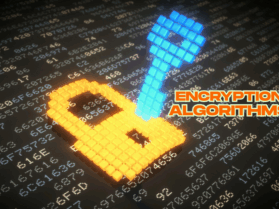Cyber-attacks are harmful at any time for any company, but when the victims fail to retrieve stolen data, the situation can be far more devastating. To address such challenges, IT security experts suggest data backups. It is an effective strategy for data recovery.
According to sources, companies may take over eight months to recover from a cyberattack like malware or ransomware. Small and medium-sized organizations lose an average of $50,000 following a cyber assault that results in bankruptcy at times. Data reflects that more than 40% of organizations permanently lose their data after a cyberattack.
Wondering how to tackle the challenge of recovering company data after a possible threat? Having a data backup strategy can assist in such situations inevitably. In this blog we shall learn about data backup tactics in detail alongside highlighting various approaches for the same.
What is Data Backup Strategy?
Data backup is a method of creating copies of datasets and storing them in different locations. The process makes data easily accessible and enhances flexibility within organizations. People can store data on both online and offline servers limiting the probabilities of cyber-attacks.
A data backup strategy is how organizations store their company data. This tactic is highly beneficial for recovering data following a cyber-attack, encouraging convenient data management, and enhancing data security.
Organizations need to determine the frequency of backup and location to store the datasets before scheduling the storage procedure. This is a supreme tactic for running a risk-free business from the cybersecurity angle.

Why is Having a Data Backup Strategy Important?
Disasters like cyber-attacks can occur at any moment without prior notice. Therefore, having a thorough disaster recovery plan is mandatory. Data backups are the most cost-effective tactic for addressing critical situations like cyber-attacks. Having a data backup strategy can benefit organizations in many ways:
Prevention against cyber threats and Data recovery: Adopting a data backup strategy can be a great method to recover stolen data following a cyber assault. Even in cases of ransomware attacks, companies fail to recover entire data after paying the ransom amount. While initiating data backups, people can refrain from paying any cost to the intruders.
Data management: Storing data in multiple location avails people to access and manage data in a superior way. People can access data sets during a time of need without visiting the data center.
Human errors: As per data, the maximum number of cyber-attacks occur due to human errors, which can be intentional or unintentional. A data backup strategy restricts unauthorized people from accessing data and making changes to it.
Hardware malfunction: Many a time, companies encounter challenges when their systems and computers go through a hardware failure. In such situations, employees lose their data that cannot be recovered ever. A data backup strategy can be highly advantageous on such occasions.
Natural disasters and more: Natural disasters like cyclones can severely impact hardware, which can cause data loss. Data backup can safeguard user data from such incidents.
What are the Various Data Backup Strategies?
There are broadly three types of data backup strategies: full backup, incremental backup, and differential backup. These types follow different data storing methods that can be equally essential. Apart from that, below are a few data backup strategies that companies can easily adopt to shield their data:
Onsite backup strategy:
Onsite backup defines the process of storing data on a different hard drive that is manageable with a local network. When the local hard drive fails to store data or intruders corrupt it to steal data, users can easily access their valuable data, which is safe in the onsite backup.
Offsite backup:
When people store their data in a separate drive or location that they cannot access through the local network, it is called an offsite data backup strategy. The location is physically apart from the local drives. Nevertheless, the data is accessible with an internet connection. Organizations highly implement this strategy to tackle data loss risks.
3-2-1 backup strategy:
The 3-2-1 method suggests that organizations have three copies of their data, two in different formats in the local location and one in the offsite location.
Concluding Remarks:
While creating and integrating a data backup strategy, make sure to formulate a risk assessment plan alongside determining backup frequency and process. Additionally, ensure to safeguard the different storing locations with appropriate authentication measures and antivirus to prevent the risks of data loss. Read our articles to understand the dynamic practices of cyber-attacks around the globe.
You may also like to read:
Why Data Protection is Important for Your Organization? An In-Depth Guide
Cybersecurity Best Practices: Protecting Your Digital Assets in a Connected World





